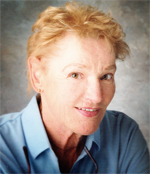A Day at Roland Garros -
and a Year Round Invitation
Lee Tyler

Since I was in Paris to take a riverboat cruise down the Seine, my timing was perfect. The French Open was in its next-to-last day, and I hailed a taxi. It was a beautiful (and inexpensive) ride around the Arc de Triomphe and along the Bois de Boulogne.
The gates had just opened, the line was very short, and once I was past security I breezed into the grounds. The first thing I noticed: the museum.
The French Federation of Tennis has a great one at Roland Garros. A current exhibit features Roland Garros. They call it "Moi."
The French Open may be over but the exhibit continues. Should you be planning a trip to Paris, it may surprise you to know, Roland Garros welcomes visitors all year round.
The "Moi" exhibit runs through March, 2014, and on the days the museum is open, there are guided tours of the grounds. Click Here to send an email to the museum for details. tenniseumvisites@fft.fr
The name Roland Garros has of course become synonymous with French tennis. But most knowledgeable people know that in reality there isn't much of a direct connection.

Garros was born in 1888 on the French island of Reunion, the son of an army officer. The family moved to Paris when he was a boy. Sickly as a child, he was sent to the more balmy climate of Cannes to get healthy.
Did he ever! As he grew up he became a bon vivant, popular with the ladies, handsome, good at many sports -- soccer, rugby, cycling, boating. But there is barely a mention of tennis.
It was flying that intrigued him the most. At 21 he learned how to fly and soon began winning air races and aerial stunt shows. At 24 became an aviation hero, the first person to do a solo flight from France across the Mediterranean Sea to Africa. A replica of his little plane is part of the display.
When France entered World War 1, Roland Garros quickly became known as an ace fighter pilot, having mastered a new way to fire a machine-gun through his propellers.
Forced down from the air by the Germans, he was captured, imprisoned, but escaped. He returned to active duty, but was killed in aerial combat just one day short of his 30th birthday. World War 1 ended just five weeks later, November 11,1918.
So why is the stadium named for him? Flash forward to the sports-crazy year of 1927. The Davis Cup competition was hot news. On their third try in Philadelphia, the French team beat the U.S.

Suddenly there was a need to build a large tennis stadium in Paris for their 1928 defense - and it was named it for the daring and famous young flyer.
Through 1933, the so-called Four Musketeers --Rene Lacoste, Henri Cochet, Jean Borotra, Jacques Brugnon --were unbeatable in Davis Cup .There's a statue of each at the four corners of the main square at Roland Garros. The Lacoste statue in particular is a not-so-crowded and easily visible place to meet, should you happen to need a rendezvous point on the grounds.
Here are a few more highlights and snapshots from my one day visit: The flowers, the trees, and the cleanliness of the place.
The aerial camera, rigged to look like a toy plane, zipping overhead from one stadium to the other.The beautiful young women in elegant white dresses serving as greeters at the gates of the three major stadiums.

The young man sitting alone on a bench reading a book with ear phones on. I assumed he was listening to music. Wrong! In fact he was monitoring the noise levels for the benefit of radio and television.
The plaza of the musketeers: flash mob dancers, circus acrobats, a jazz quartet, a brass band. At the BNP Paribas booth, you could have your picture taken with the Suzanne Leglen trophy. (I did).
I strolled a broad walkway through the grounds called "Allee Marcel Bernard". It was lined with interactive tennis themes.
The walkway honors the French player Marcel Bernard who won both the men's singles and doubles in 1946. Not only is the promenade through Roland Garros named for him, but also one of the entrance gates. And the mixed doubles trophy is called "Coupe Marcel Bernard."
Although he is rarely talked about in the history of the game or mentioned by the international media, Bernard was the last French champion at Roland Garros for 37 years--until Yannick Noah in 1983. The French have been waiting 30 years for another.
Being at Roland Garros was a sentimental journey. Marcel and my longtime friend, Tom Brown of San Francisco, had met there in 1946. Fresh from his sensational debut at Wimbledon, Tom got as far in the French as the singles semi-finals and the mixed final. In 1947 he played the mens' doubles final.
That's all historical fact. But the one question that will never be answered is what would Roland Garros himself think of the current event and his decades long association with the French Open?




